|
|
|
|
|
|
|
|
|
|
|
|
|
|
|
|
|
|
|
|
|
|
|
|
|
|
|
|
|
|
|
|
|
|
|
![[Francis Naumann]](../4logo.gif) |
|
|
|
|
|
|
|
|
|
|
|
|
|
|
|
|
|
|
|
|
|
|
|
|
|
|
 |
|
|
|
|
|
|
 |
|
|
|
|
|
|
|
 |
|
|
|
|
|
|
|
|
|
|
|
|
|
|
 |
|
|
|
|
|
|
|
|
|
|
|
|
|
|
|
|
|
|
|
|
|
|
|
|
|
|
|
|
|
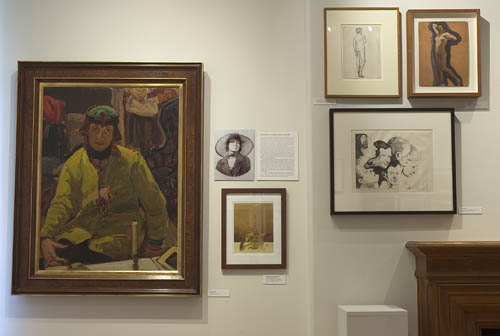 |
| |
|
|
|
|
|
|
|
|
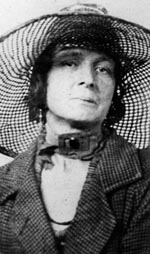 |
|
|
|
|
|
|
|
|
|
(1874-1927) Baroness Elsa von Freytag-Loringhoven was born Elsa Hildegard Plötz in Swinemünde, Germany, on July 12, 1874. Her mother died when she was eighteen years old; rather than subject herself to an overbearing and abusive father, she left home to live with an aunt in Berlin. There she took painting lessons at the Berlin Art School, trained as an actress, and worked as a chorus girl. She eventually moved to Munich, where, in August of 1901, she married the architect August Endell. Six months later, she met the writer Felix Paul Greve, whom she married in 1907. In 1910, Greve and Elsa moved to America, settling on a farm in Kentucky, but within a year, Greve abandoned her and moved to Canada (where he changed his name to Grove and became a prize-winning novelist). Elsa slowly made her way to New York, where she would spend the next ten years working as an artist’s model, barely earning enough money to survive, yet reaching full maturity as an artist in America’s liberating cultural climate.
|
|
|
|
|
|
|
|
|
|
|
|
|
|
|
|
|
|
|
|
|
|
|
|
|
|
|
|
|
|
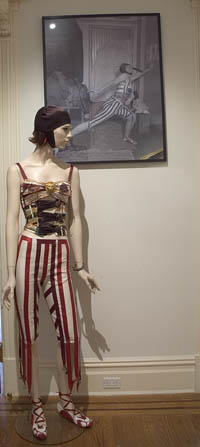 |
|
|
|
|
|
|
|
|
|
|
|
|
|
|
|
|
|
|
|
|
|
|
|
|
|
|
|
|
Shortly after her arrival in New York, Elsa met and married Leopold Baron von Freytag-Loringhoven (although she was presumably still married). Soon thereafter, her new husband embarked for Europe to enlist as an officer in the German army. Instead, he was captured by the French and held as a prisoner of war, only to commit suicide a few years later (an act, Elsa later remarked, that was the most heroic of his life). It was over the course of the next five years—while living in a small apartment in Greenwich Village—that Elsa became notorious for her eccentric dress and outlandish behavior. Few who caught a glimpse of this extraordinary woman could forget her. What she put on her head alone was enough to engrave her curious countenance permanently in memory. “She wore the lid of a coal scuttle,” one person remembered, “strapped under her chin like a helmet.” She walked the streets with a bird cage over her head (with a live canary inside), decorated her face with postage stamps, and tied tomato cans together for a bra. In effect, she treated her body as a living work of art, causing historians today to recognize her preeminence as America’s first performance artist. |
|
|
|
|
|
|
|
|
|
|
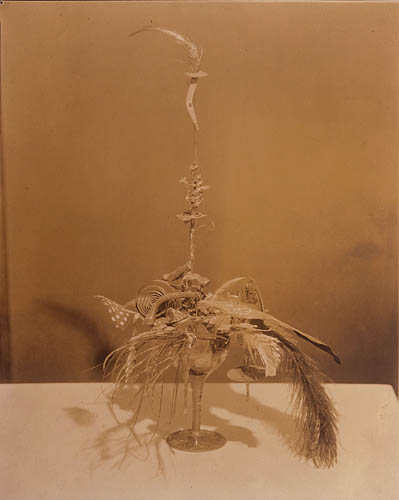 |
|
|
|
|
|
|
|
|
|
|
|
|
Baroness Elsa von Freytag-Loringhoven
Portrait of Marcel Duchamp, ca. 1920
Copy print of a photograph by Charles Sheeler 9 5/8 x 7 5/8 in.
(original print in Dada exhibition at the Museum of Modern Art, New York) |
|
|
|
|
|
|
|
|
|
|
|
|
|
|
|
|
|
|
With the departure of her husband, the Baroness was left to fend for herself on the streets of New York. Since she was very willing to pose in the nude, she earned some money working as an artists’ model. The American realist painter Theresa Bernstein painted her portrait, and made several studies (both in pencil and in oil) of her somewhat androgynous physique, while the artist George Biddle made a lithographic portrait in which her closely cropped hair and angular facial features were rendered in multiple form. It was in these years that Elsa began to make her first collages and assemblages, most of which were—like her dress—fashioned from an assortment of discarded materials (as in her Portrait of Marcel Duchamp, recorded in a photograph by Charles Sheeler). With the American artist Morton Schamberg, she made a sculpture that many have come to view as the ultimate expression of New York Dada: a plumbing trap mounted onto a miter box that was given the simple but blasphemous title God (Philadelphia Museum of Art, Arensberg Collection). Her poetry was published in the vanguard literary journal The Little Review, where she was declared “the first American dada… the only one living anywhere who dresses dada, loves dada, lives dada.” |
|
|
|
|
|
|
|
|
|
|
|
|
|
|
|
|
|
|
|
|
|
|
|
|
|
|
|
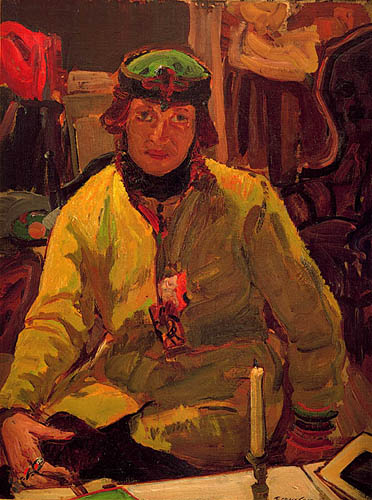 |
|
|
|
|
|
|
|
|
|
|
|
|
|
|
Theresa Bernstein
The Baroness, 1917
Oil on canvas, 35 x 27 inches |
|
|
|
|
|
|
|
|
|
|
|
|
|
|
|
|
|
|
|
|
|
By 1923, finding it nearly impossible to live in New York without a regular source of income, she returned to Germany. On December 14, 1927, Elsa and her dogs died quietly while sleeping. Some speculated that a sailor the Baroness had picked up on the street turned the gas jets on, slowly killing the occupants of the small room by asphyxiation. Whether the act was accidental or intentional has never been determined. She might have been, as the writer Djuna Barnes later speculated, simply the tragic victim of “a cruel joke carried too far.” |
|
|
|
|
|
|
|
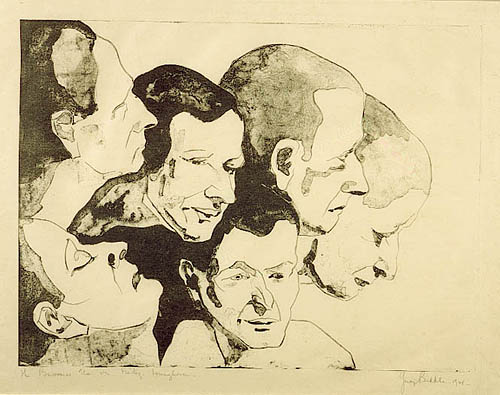 |
|
|
|
|
|
|
|
|
George Biddle
The Baroness Elsa von Freytag-Loringhoven, 1921
Lithograph, 14 1/8 x 17 7/16 inches |
|
|
|
|
|
|
|
|
|
|
|
|
|
|
|
|
|
|
|
|
|
|
|
|
|
|
|
|
|
|
|
|
|
|
|
|
|
|
|
|
|
|
|
|
|
 |
 |
 |
 |
 |
 |
 |
 |
 |
 |
 |
 |
 |
 |
 |
 |
 |
 |
 |
 |
 |
 |
 |
 |
 |
 |
 |
 |
 |
 |
 |
 |
![[Francis Naumann]](../4logo.gif)






